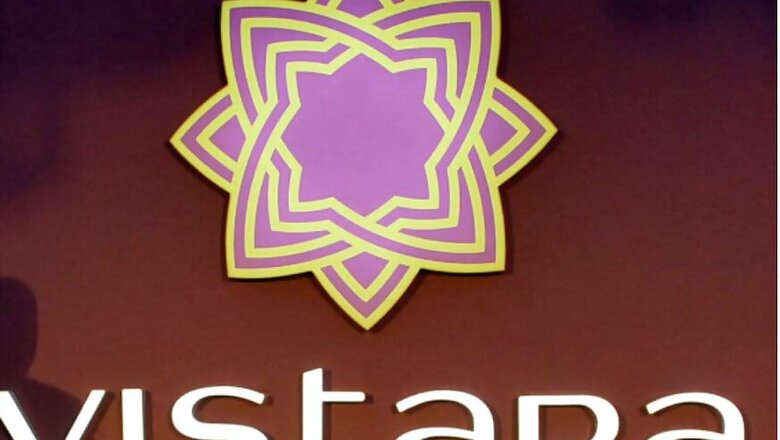
views
New Delhi: Some of the 50 aircraft that will join the Vistara's fleet over the next three years will have just economy-class seats and the airline has factored in operational challenges that may arise from having planes with different class configurations, its CEO Leslie Thng said on Tuesday.
"Vistara is at a stage of maturing, which means it is growing in scale, size as well as in creating robust operational processes. We have factored in the operational challenges that may arise from having different fleets and are confident of successfully steering through them," the Vistara CEO told PTI.
When an airline operates planes with different class configurations, the flexibility in swapping aircraft on routes and consistent passenger experience become two primary challenges.
Asked if the airline has decided the routes on which the all-economy aircraft would be deployed, Thng said, "No, we have not yet decided the specific routes, but those few aircraft will be deployed on routes that see weaker demand for front cabins (means business class and premium economy class) or on seasonal leisure routes. This only means offering the right product for the right market."
At present, there are 39 aircraft in Vistara's fleet comprising 19 A320neo aircraft, 13 A320ceo aircraft and seven Boeing B737-800NG aircraft.
One of the A320neo aircraft in its fleet currently is of all-economy configuration and has 180 seats. It is being used on Delhi-Ranchi and Delhi-Udaipur routes.
Rest of the A320neo aircraft as well as all A320ceo planes have three-class configuration -- business class, premium economy class and economy class. These planes have 164 seats.
The Boeing B737 planes have dual class configuration with business and economy classes.
Thng said that the decision to have some all-economy aircraft in the fleet was taken after careful evaluation of the current market dynamics to offer the right product to the market demand.
However, he asserted, "It is important to note that the three-class cabin configuration is one of Vistara's strongest USPs and we have every intention of offering it on as many routes as possible."
Jet Airways and Kingfisher Airlines -- both bankrupt currently -- used to operate a certain number of planes with all-economy configuration even though they were full-service carriers.
When asked what mistakes, according to him, did these two airlines made in a mixed fleet and how he would be careful about not repeating what they did, Thng replied, "First of all, only a fraction of Vistara's fleet will have all-economy configuration. Secondly, all-economy aircraft configuration does not mean an LCC (low-cost carrier) product."
"Vistara's all-economy aircraft configuration is not at all to be confused with a change of business or operating model as our services in that aircraft are no different from the economy class service of any of our regular aircraft," he added.
"We are not going to operate our all-economy aircraft under a sub-brand with a different business model," Thng stated.
While on one hand, Vistara would be adding 50 new aircraft over the next three years, on the other hand the Gurgaon-based carrier would be phasing out its seven dual-class B737 aircraft -- which were with Jet Airways and were taken on lease after its bankruptcy in April last year -- during the same time period.
Vistara has codeshare agreement with various foreign full-service carriers (FSCs) - Lufthansa Airlines, United Airlines, Japan Airlines, British Airways etc.
When asked how he will deal with their passengers if they are taking a connecting Vistara flight in India that has all-economy configuration, he replied, "We do not think that this will impact our codeshare operations."
In response to another question, he stated that Vistara will not be operating all-economy aircraft on any of its international routes.
On the question of what role did the government's route dispersal guidelines (RDG) played in Vistara's decision to move from three-class configuration in all planes to all-economy configuration in few planes, he replied,"Vistara is fully compliant with RDG."
RDG divides domestic routes in three categories. Category-I represents the 20 most profitable ones, among metros. Category-II has the Northeastern region, Jammu & Kashmir, and Lakshadweep. Category-III represents metro to non-metro cities such as Kochi, Varanasi and Coimbatore.
Airlines have to deploy on Category-II routes at least 10 per cent capacity of what they have on Category-I routes. Likewise, they have to deploy on Category-III at least 35 per cent of their capacity on Category-I routes.
"We will add more than 50 aircraft to our fleet in the next three years. While some of the aircraft from the Airbus A320neo family will be configured all-economy, majority of the aircraft will have three-class cabin configuration," Thng said.




















Comments
0 comment